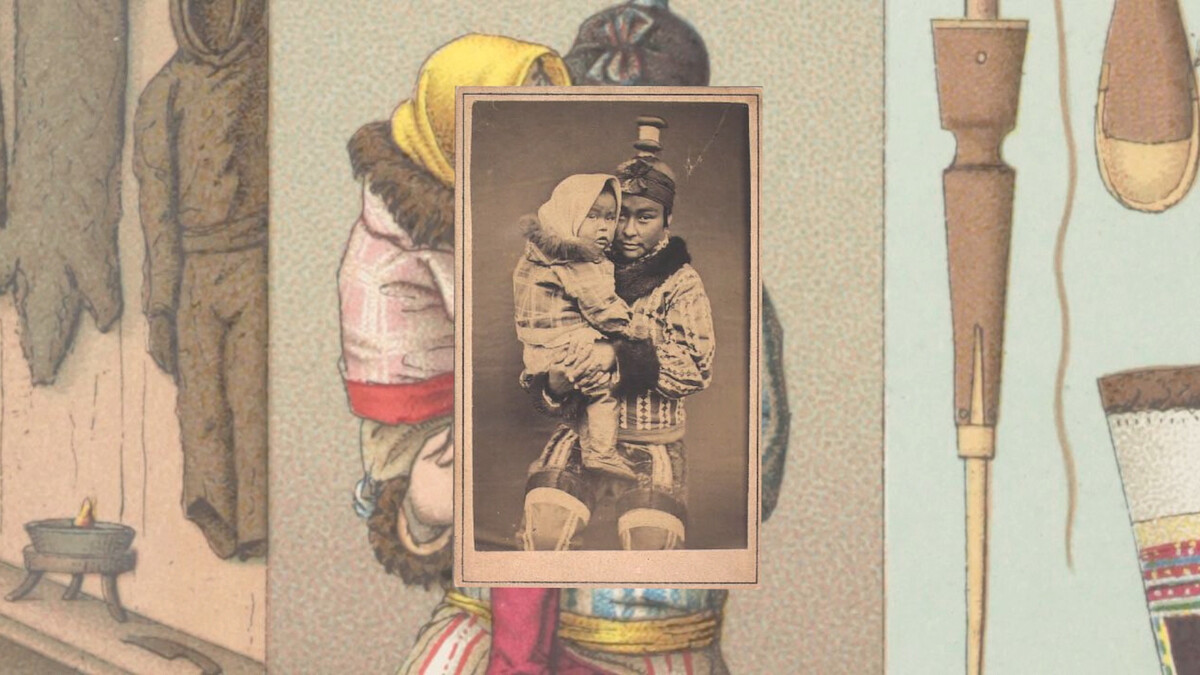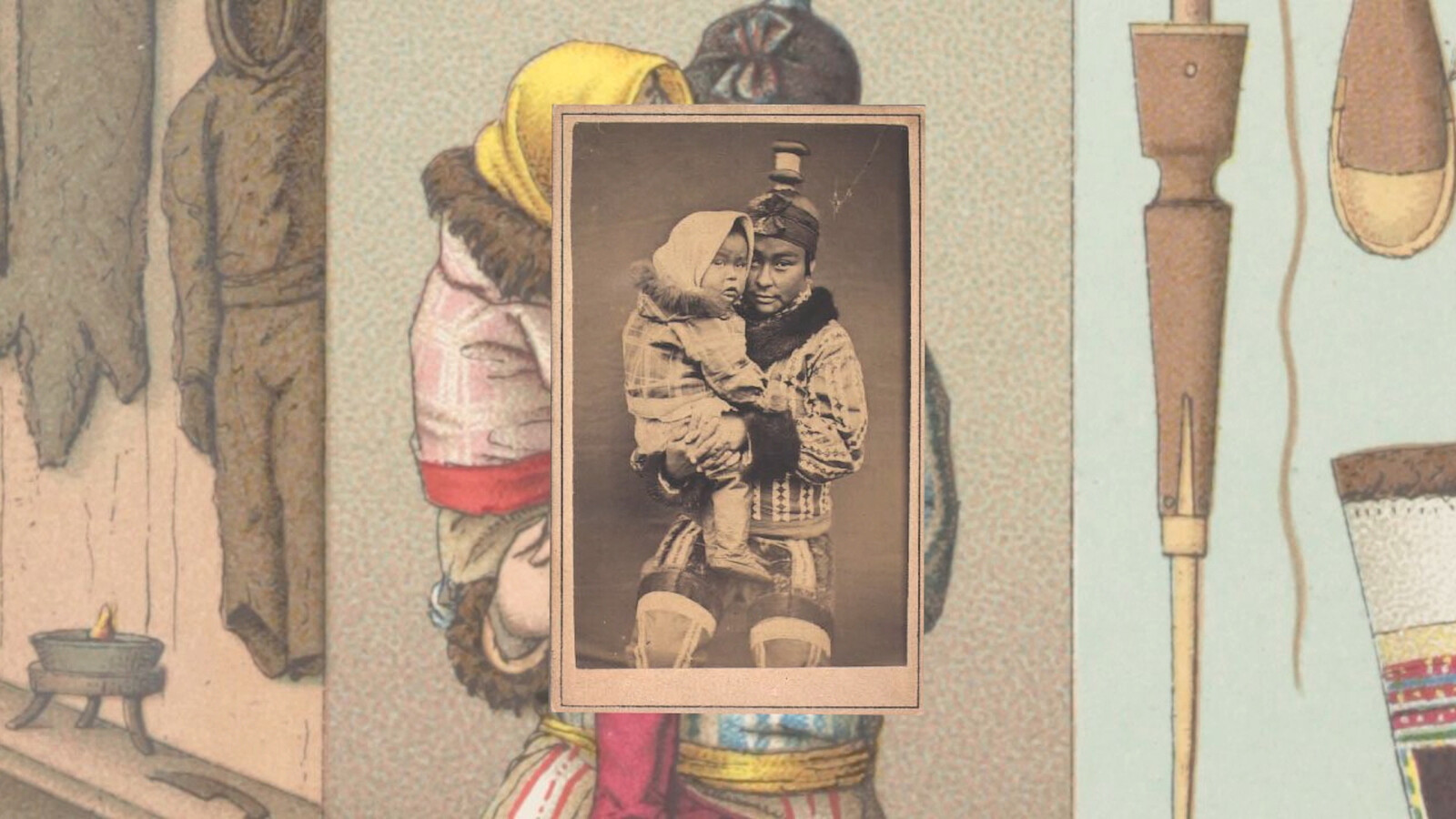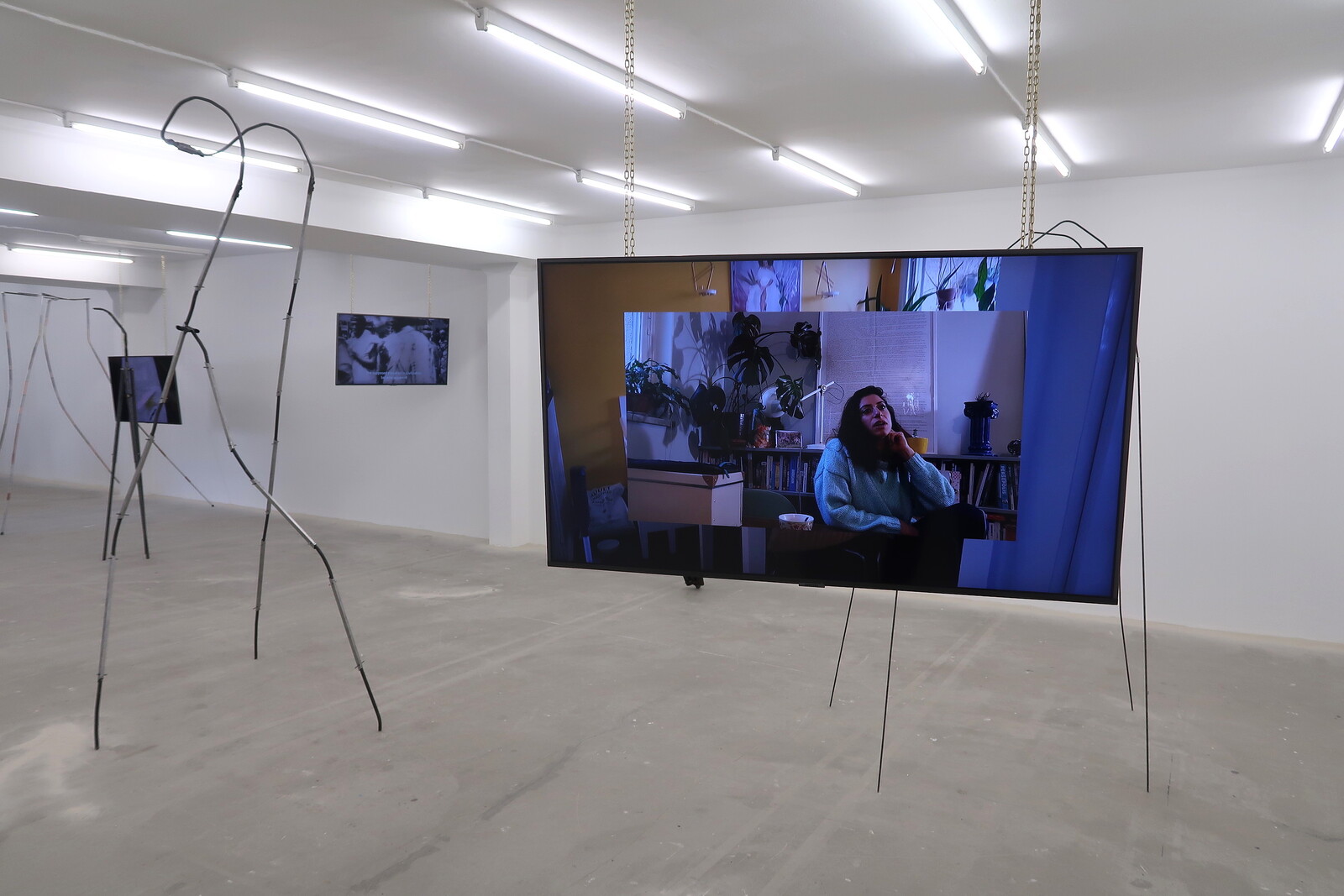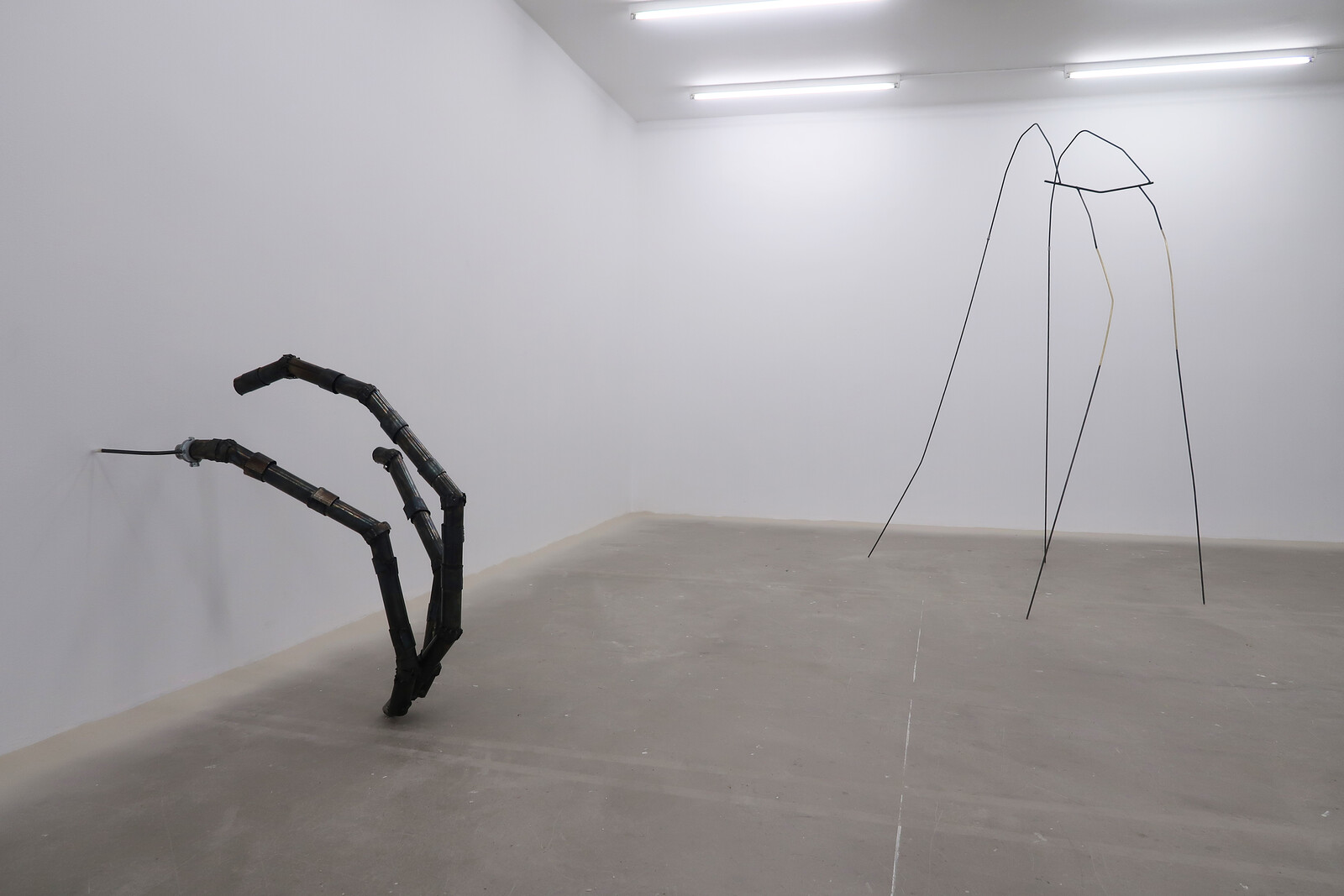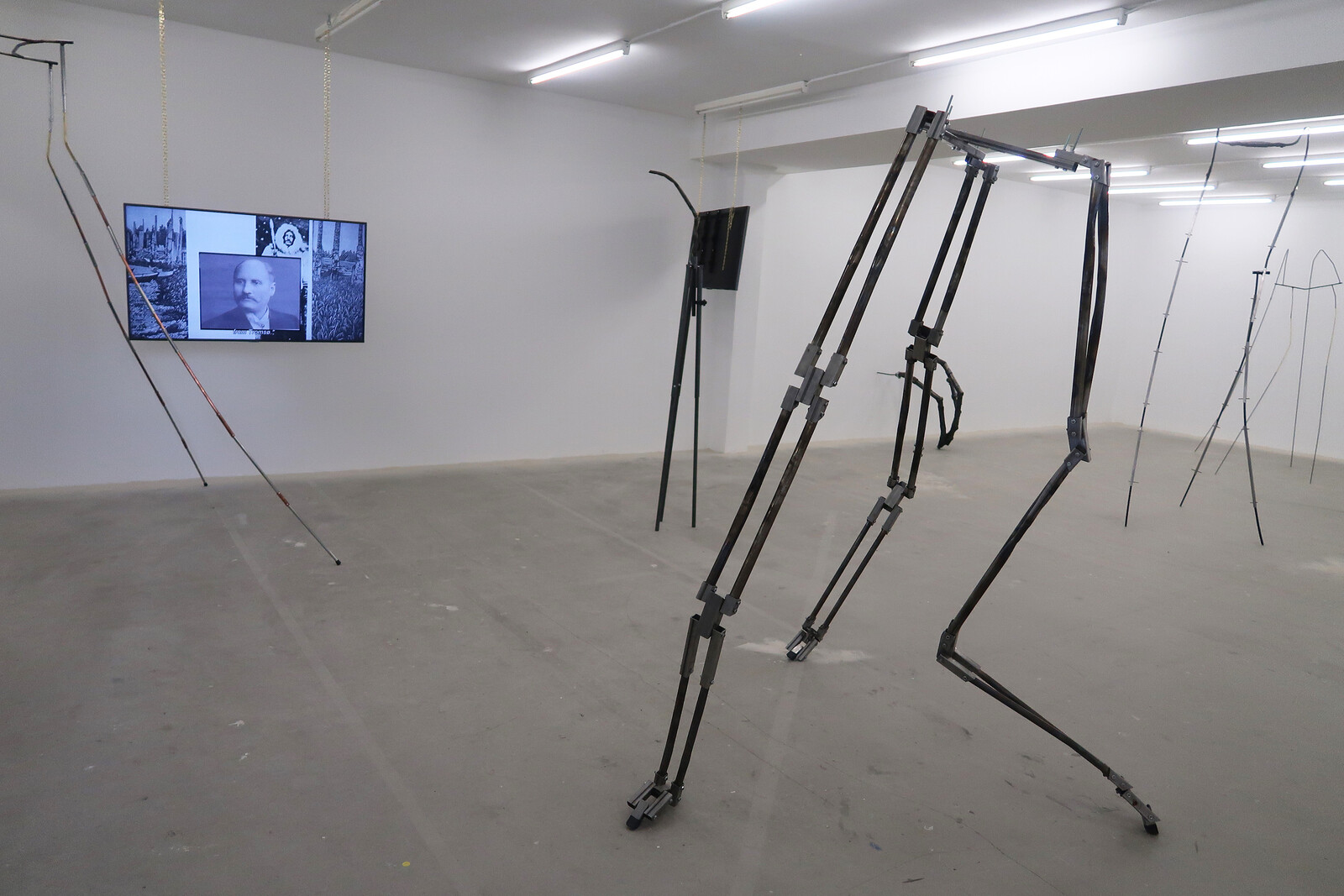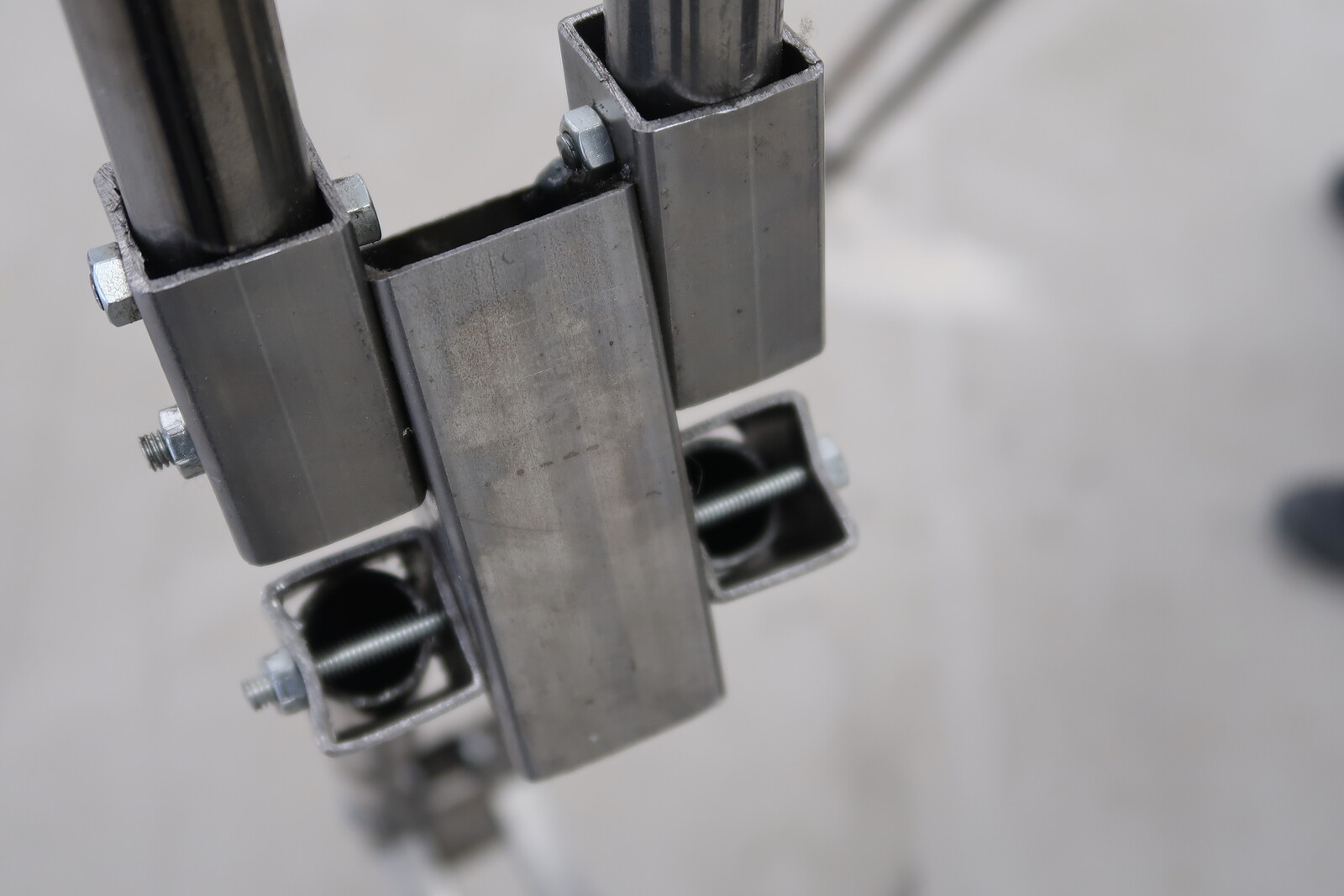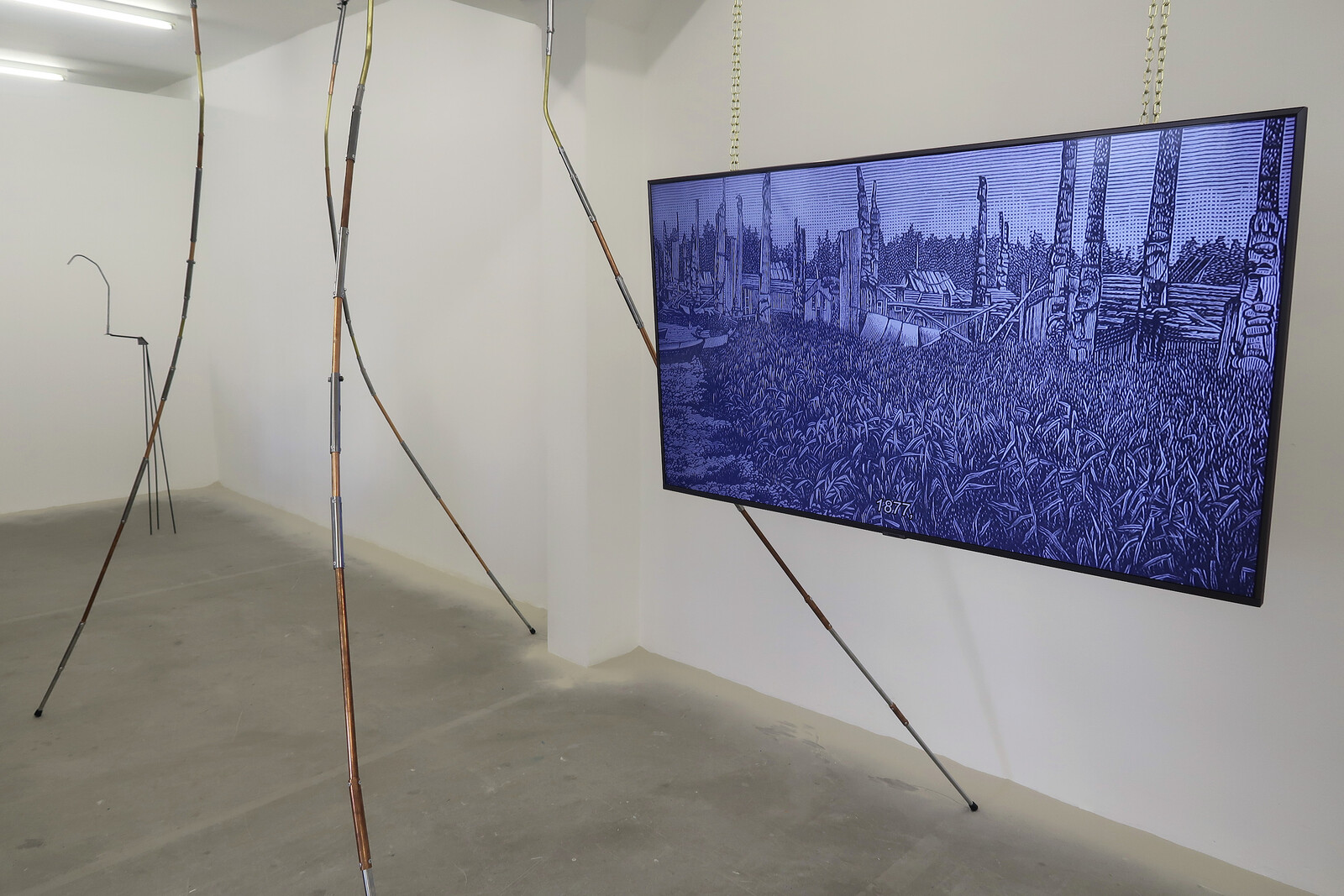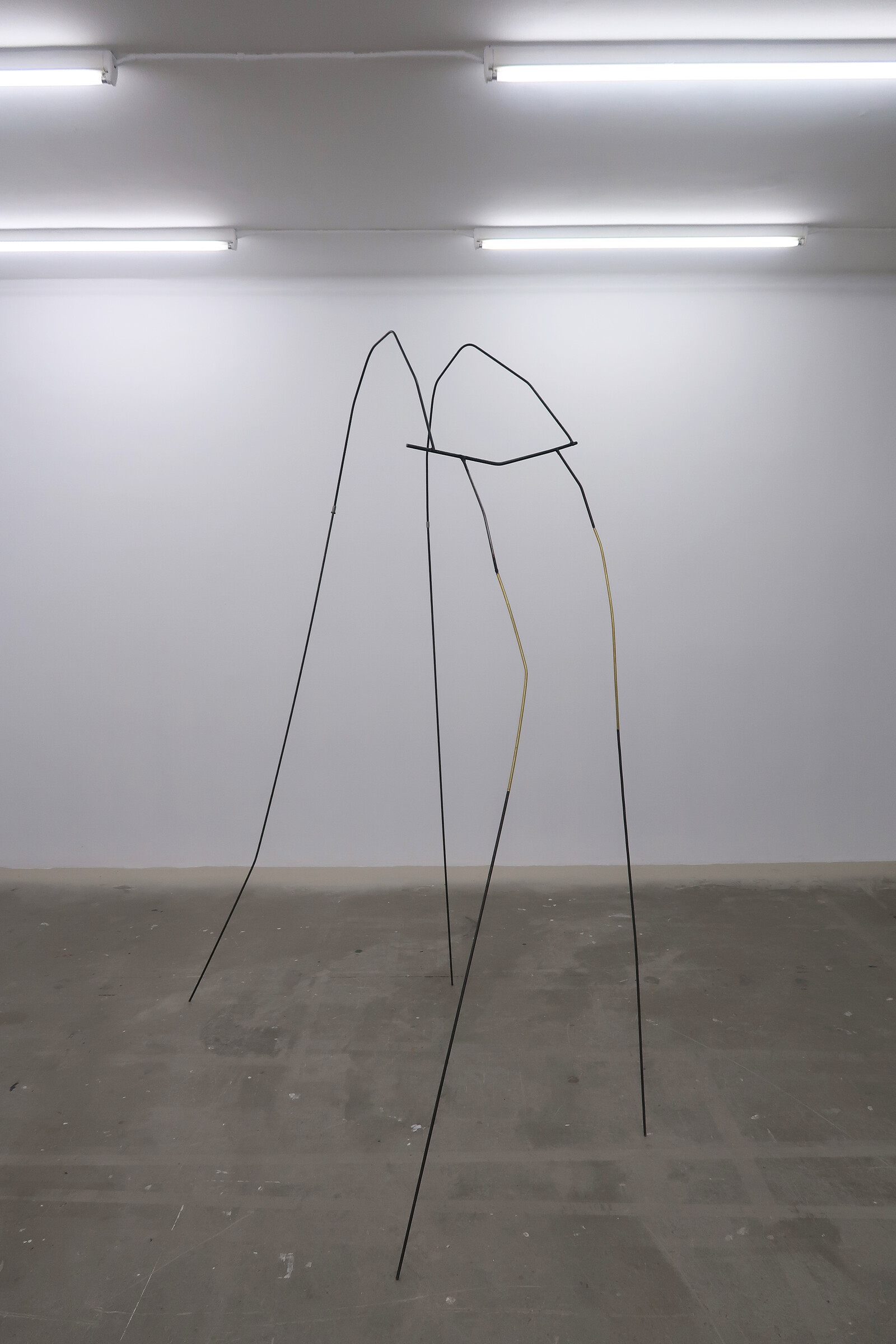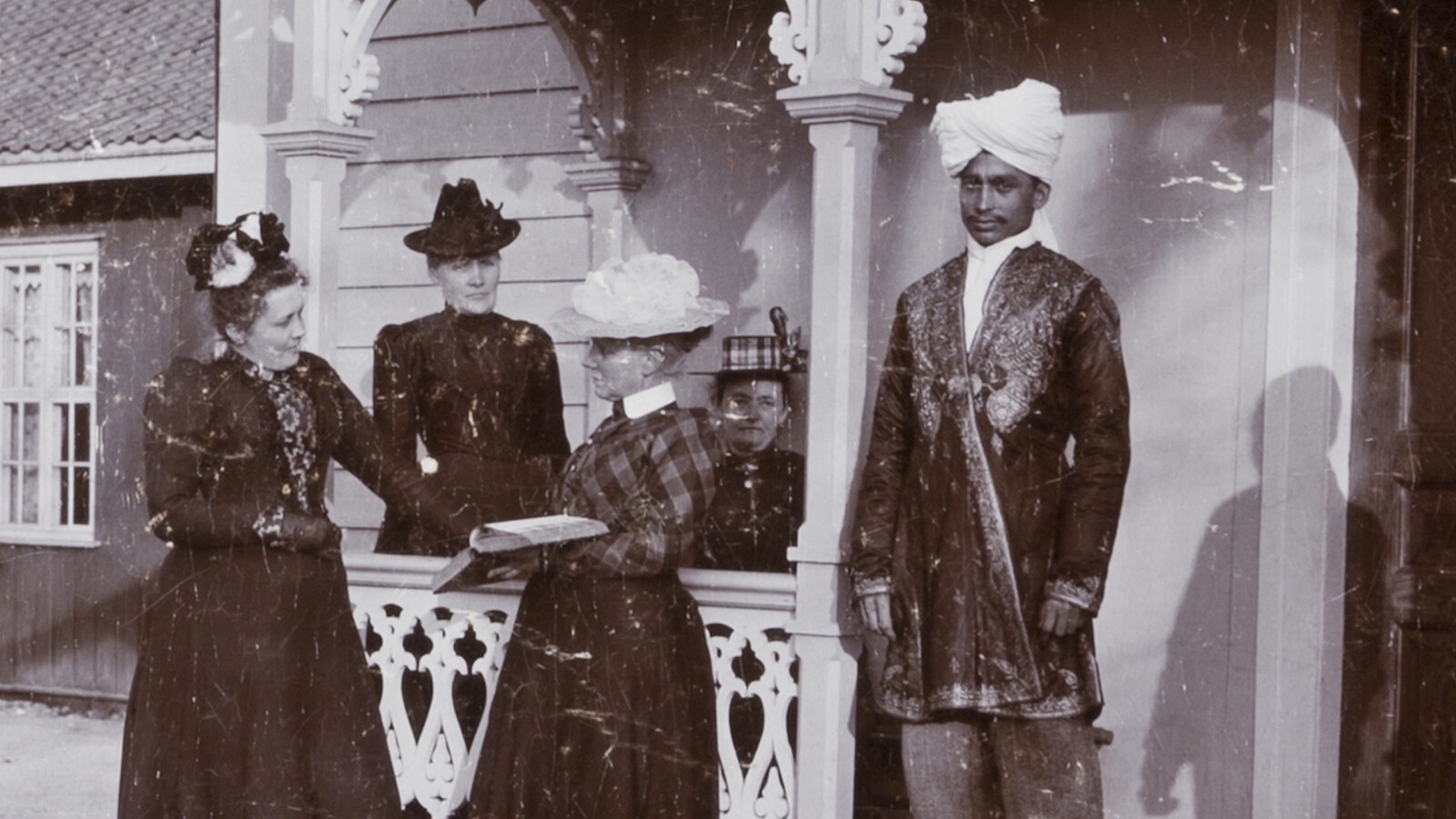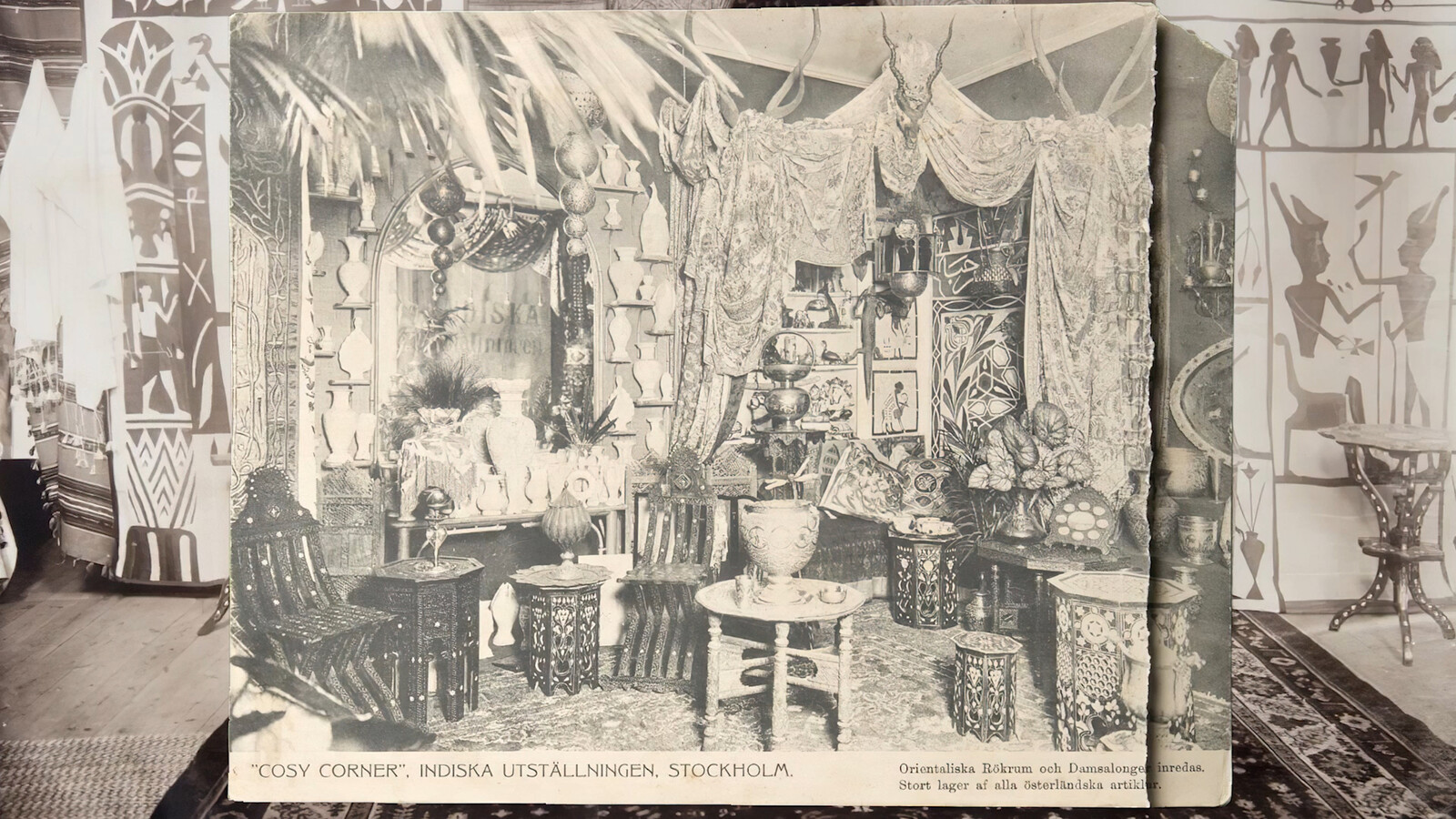Hanni Kamaly’s lanky sculptures remind me of something an earth scientist in N. K. Jemisin’s 2015 SF novel The Fifth Season said about a mountainous life form: “They are an arcane thing, you understand, an alchemical thing […] Obviously they possess some sort of kinship with humanity, which they choose to acknowledge in the statue-like shape we most often see, but it follows that they can take other shapes. We would never know.”1 The strangeness of Kamaly’s creatures is similar—impenetrable and infinite, simultaneously.
The sculptures are crowded into Index’s exhibition space. Some, such as LAMINE DIENG (2018–21), stoop to fit under its low ceiling. Made of paired solid metal rods and standing on five legs stabilized by at least four joints each, LAMINE DIENG’s formal composition should imply both strength and flexibility, yet it gives the impression of a thing that has been abruptly switched off in the middle of a gesture. The same sense of interruption affects all of Kamaly’s sculptures, and it feels like an act of power intended to limit the development of these careful, dexterous creatures.
Jemisin’s novel comes to mind because of the attention the author pays to the violence inflicted upon beings perceived to be too extraordinary. The “orogenes” of Jemisin’s universe are humans of enormous telepathic ability, capable of controlling the movement of the earth and channeling thermo-dynamic energy. Their difference is not simply rejected in the world of Jemisin’s “Broken Earth” series; those marked by it are tortured before being bound into service to a mediocre kind of stability. Kamaly’s AMAD AHMAD (2019–21) pays the same kind of attention. It is a three-pronged tubular shape installed to face a wall. Two of its orifices search blindly for something while the third sends a slim metal rod directly into the wall’s sheetrock like a probe. It resembles a life form shaped by improvised solutions to the problem of staying alive in a hostile environment, a sense that is only heightened when I realize that Amad Ahmad was the name of a 26-year-old Syrian migrant mistaken for a Malian man of the same name and wrongly detained in Germany in 2018. Amad Ahmad died from injuries he sustained when his cell mysteriously caught fire and his calls for help went unheeded.2
Four flat screens are dispersed throughout the gallery, each showing sections of one video piece entitled Gadju Okabak Ulrikab Koskimo (2021). Hung from the ceiling by brass-plated chains, each traces an episode from Swedish history when a non-white person was objectified. The editing seems straightforward at first: the artist scrolls through a newspaper dated 1901, panning over photographs from travelogues published during this era. Kamaly turns a page and then zooms in to reveal the obscene accumulation of things acquired while traveling in colonized countries by Mathilda Hamilton, a white Swedish woman who would go on to found the popular home goods store Indiska.
Kamaly maps the connections between documents in a deadpan voice-over, yet rushes through the seams joining each story. Narrative information leaks out of the artist’s montages. That Kamaly knows about the infinite play of formal or physical responses to the impossible conditions of life some people face is clear from each joint in KARIMA (2021), which is painstakingly welded to accommodate brass, then copper, then iron metal tubing, as though tracking every time it has had to transform to survive. By contrast, the video illustrates the simple yet destructive fact that people were objectified under colonialism. The direct approach Kamaly uses in the videos fails to transform the image of racist and colonial objectification into something capable of testifying to its violence without reproducing it—a failure that is made all the more frustrating by the extraordinary expressiveness of LAMINE DIENG, that towering mechanical form that, cut off at its hypothetical waist, staggers under the weight of a body it no longer carries.
Nevertheless, there is a series of narrative fragments lodged in the videos with no explanation that do suggest the affective complexity I see in the sculptures: a large gorilla kneeling at the edge of his enclosure in an open-air zoo and tenderly prodding the prone form of a human toddler who must have fallen into the pen; a blurred fin-de-siècle photograph of an Indian man who converted to Christianity and traveled to Sweden with his missionary benefactor who is caught in the middle of a gleefully explosive snow fight; the painful footage of Indigenous people from Bella Coola Valley in British Columbia being permitted to see a totem pole that belonged to their ancestors for the first time and watching them rub their hands on the wood, confirming that something invisible is still intact. There is some tacit acknowledgement in these and other photographic flickers that something impossibly violent took place but that it did not completely engulf the existence of those subjected to it.
Gadju Okabak Ulrikab Koskimo falls short at a formal level because it doesn’t make a shape from these broken stories complex enough to reflect on colonialism’s voraciousness for things. But every time I try to look away I catch sight of ABUKAR (2020–21) or SAJID (2021) and I am filled with a sense of loss and an irrepressible wish that they might find the switch that once again turns on the world in which they live.
N. K. Jemisin, The Fifth Season (London: Orbit Books, 2015), 6.
Dietmar Gaisenkersting, “German authorities shut down investigations into far-right and state crimes, World Socialist Web Site (January 6, 2020): https://www.wsws.org/en/articles/2020/01/06/germ-j06.html.
